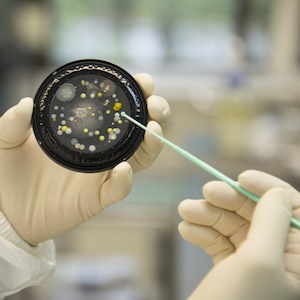blog
January 9, 2014 | Source: Rapid Micro Biosystems, Inc.
5 Ways the Manual Method can Lead to Unnecessary Investigations
POSTED BY Rapid Micro Biosystems | 4 minute read
January 9, 2014 | Source: Rapid Micro Biosystems, Inc.
POSTED BY Rapid Micro Biosystems | 4 minute read
 Is your company still using traditional methods for microbial quality control? While the century-old method remains the industry standard for microbiological testing, it's rife with inefficiencies and potential errors. These problems can easily lead to unnecessary out-of-specification (OOS) investigations – many of which may require downtime on manufacturing lines. Here are just a few of the ways human errors can cause these costly investigations:
Is your company still using traditional methods for microbial quality control? While the century-old method remains the industry standard for microbiological testing, it's rife with inefficiencies and potential errors. These problems can easily lead to unnecessary out-of-specification (OOS) investigations – many of which may require downtime on manufacturing lines. Here are just a few of the ways human errors can cause these costly investigations:
Many tests require multiple in-process counts, particularly those that take a week or longer to produce final results. By hand, microbiologists must remove samples from incubators, perform counts, record the results and return the plates to their proper slots. And, even during shorter tests, samples must often be manually transferred from one incubator to another.
Unfortunately, all of these plate removals, transfers and replacements create opportunities for contamination. Even in a clean room and gowned, the teams handling the samples may accidentally transfer microbes onto their sample plates' growth mediums. If these microbes multiply into visible colonies, those samples may be recorded as showing OOS levels of microbial growth.
Even without inadvertent contamination, incubation transfer errors can cause avoidable excursions. When serial incubation samples are not transferred at the appropriate time, an investigation must be performed.
Unlike rapid methods, manual testing still relies on the naked eye. While experienced microbiologists can achieve high rates of accuracy, there is always the potential for miscounts, especially with high CFU samples. A few low counts may cause a team to overlook a potential problem area, and several high counts will lead to unneeded investigations and interventions. On the other hand, automated technologies such as the Growth Direct™ System incorporate imaging technologies that remove humans from the counting process.
The incubation, transfer and plate counts may occur perfectly by hand, but data entry keying errors can still incorrectly record results – especially when repetitively recording counts from hundreds of samples. Just one incorrect recording of an in-specification sample can lead to an avoidable investigation. Furthermore, if one sample is incorrectly recorded as out of specification, an actual OOS sample may be recorded as acceptable, causing quality control personnel to overlook a problem area.
The time required for the manual method could delay the response to an upward trend in an area within manufacturing. Plus, rapid technologies not only produce faster results – they allow for easy, automated analysis of trends in area contamination . Users can obtain and view results quickly, spot upward trends earlier, and take corrective actions.
Avoid unnecessary investigations by implementing automated rapid detection and enumeration into your quality control process. Find out how in this free guide.